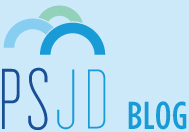Just Getting to Know Your Education Loans? Here Are the Basics from the Department of Education
A Department of Education blog post offers a basic “get acquainted with your loans” review:
Here are five things you should know about your student loans:
Federal loans are managed and backed by the U.S. government. These loans are designed to provide students with fair treatment. Because they offer the best terms for borrowers, federal loans are the best option for students.
Private loans are managed and backed by private banks. These banks are not subject to the same rules and regulations of federal loans, and may feature higher (or variable) interest rates, stricter repayment plans and penalties, or other terms that may make them more expensive.
You also may encounter other, less common types of loans, such as state loans (managed by your state) or institutional loans (managed by your college or university). In all cases, carefully read and understand the loan terms before deciding to accept.
2. Unsubsidized vs. Subsidized Loans
Federal loans can be either subsidized or unsubsidized. A subsidized student loan means that the government pays the interest for you while you’re in school, as long as you’re enrolled at least half time. That means that if you take out a $5,000 subsidized student loan to pay for your freshman year, and graduate in four years of full-time classes, you’ll still owe $5,000 when you graduate. Interest will only “accrue,” or be added to the repayment amount, after you stop being a student.
An unsubsidized student loan means that interest “accrues” even while you’re in school. Some federal loans and nearly all private loans are unsubsidized. You don’t always have to pay the interest while you’re a student, but the total amount you’ll need to repay is still growing. If you have an unsubsidized student loan, it’s a good idea to pay the monthly interest while in school, even if you don’t need to.
…
Read the full list, and dont’ forget PSJD’s more advanced education debt resources.

